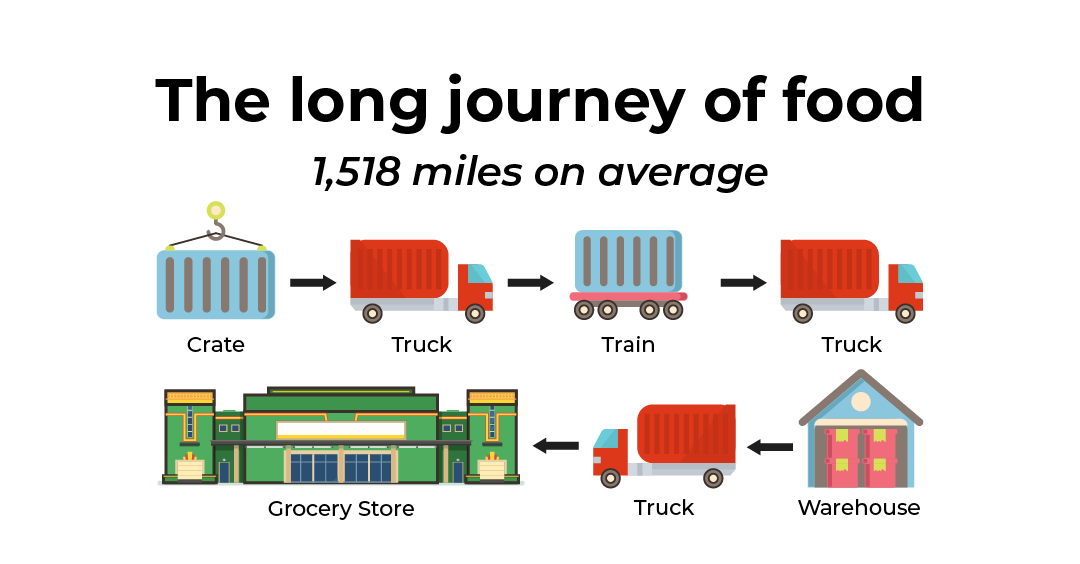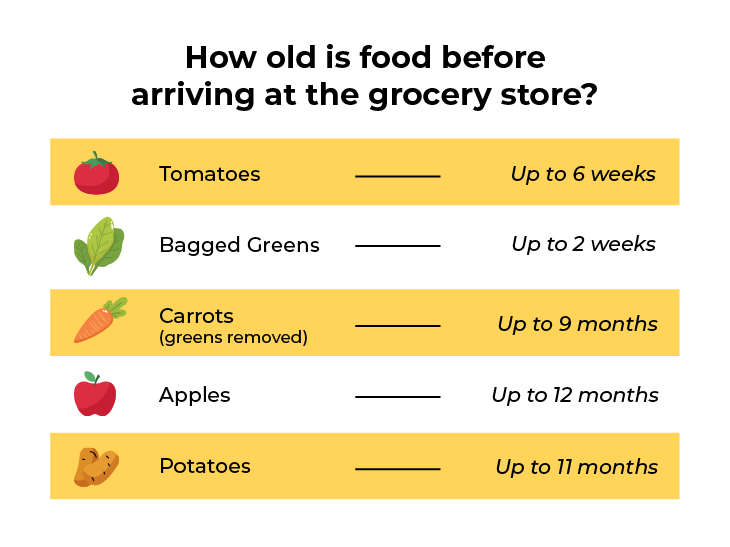The grocery store supply chain: A better path from farm to table
In the last 100 years, the path from farm to dinner table has become increasingly complex. What was once a straight line from local farm to market has now evolved into intricate travel routes, distribution centers, and food preservation techniques. With many grocery stores now selling under a single brand name, you’re likely left wondering:
- Where does my food come from?
- Is my produce actually fresh?
- Who does my money support?
To answer these questions, let’s explore the current supply chain situation.
The Conventional Grocery Store Supply Chain
The supply chain can be broken down into 5 steps:
- Farmers and Ranchers that grow the food.
- Food manufacturers that process and package the food.
- Distributors that store and deliver the food to grocery stores.
- Grocery stores that sell to consumers.
- Consumers.
While at first glance the supply chain may not seem overtly problematic, there are a number of factors that present implications for the environment, our food, the farmers, and you. Looking deeper we can find the answers to your supply chain questions.
Where does your food come from?
Due to shortages in accessible farmland, the majority of fresh produce is grown in areas far from where it is consumed. Once harvested, food travels in crates and barrels via truck, depot, and train to a distribution warehouse. There it sits until it is ready to be loaded back on truck and finally to the grocery store.
Studies have shown that produce travels an average of 1,518 miles before it reaches the consumer, some traveling more than 2,000 miles. If you factor in energy consumption for growing and harvesting, and that an estimated 38% of food is wasted every year in the US, you can see how the current food system has an immense impact on the environment.

How fresh is your produce?
While lengthy transportation routes play a role in produce age, they aren’t the only factor. Due to the use of wax and chemicals, once produce reaches a distribution center, it can sit idle simply because it can. Some produce may be more than 12 months past harvest before it arrives at the grocery store. With produce beginning to lose nutrients only 24 hours after harvest, it’s becoming increasing difficult to gauge how nutritious our food really is.

Who does your money support?
After transportation, manufacturing, distribution, and grocery store margins, how much is left for the farmer? According to a study in 2021, on average, farmers only receive $0.15 for every food dollar spent at the grocery store. With farm land growing increasingly expensive, it’s no wonder the number of small sustainable farms is dwindling. Many farms are forced to scale production, take government incentives, and ignore regenerative agricultural practices as a means to stay in business.
A better supply chain
You may be left asking, what choice do I actually have? The answer is localization, and PineMelon is working to bring a new system to fruition.
All around the country, dedicated farmers are working to bring healthy food back to their communities. One of the biggest issues they face is a lack of resources to market and deliver that food to a broad customer base. PineMelon is solving this. Using the PineMelon platform, farmers can focus solely on growing as much high-quality food as possible, while we take care of brand visibility and delivering to the community.
Why local matters
With an average distance of less than 50 miles from PineMelon’s Denver-based warehouse, produce is delivered fresh and ready for sale within 24 hours of harvest, providing peak nutrients to the consumer and significantly reducing CO2 emissions. And by eliminating the need for complex and lengthy travel routes, PineMelon’s farm partners receive upwards of $0.80 for every dollar spent, more than five times the average.
A fair marketplace
PineMelon believes in a fair marketplace, and that means reducing barriers to entry. While other grocery retailers necessitate supply minimums and daunting requirements, PineMelon supports food producers where they are. By removing barriers, producers can focus on quality and sustainability, and that is passed onto you, the consumer.
Conclusion
Ultimately, a system that supports small farmers will grow the share of small farmers. Every time we choose local we're supporting a better supply chain. There is a better path from farm to table, and together we can achieve it.
To learn more about how PineMelon is supporting small farmers and building a local supply chain, visit our website.